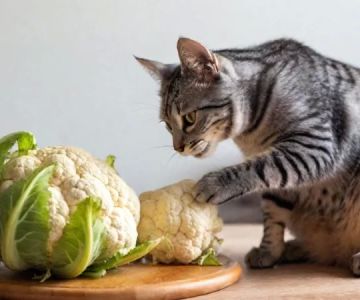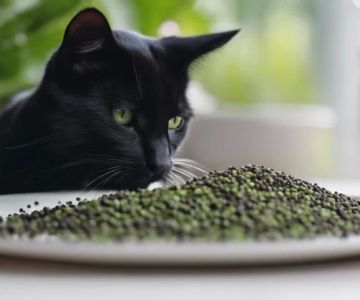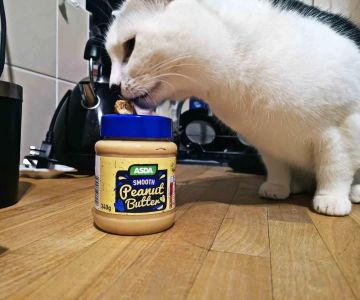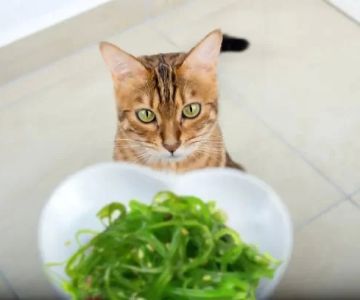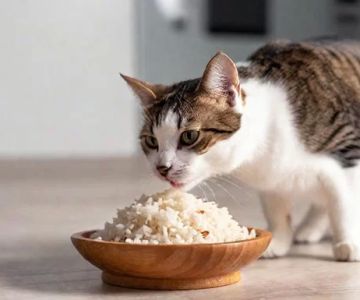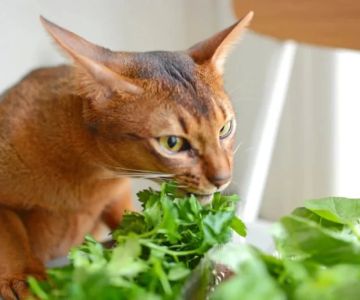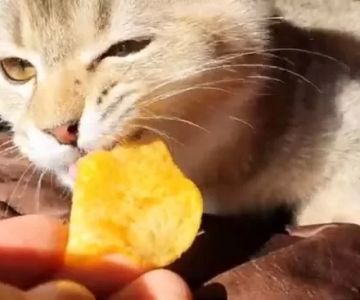- 1- Can Cats Eat Tomatoes Safely?
- 2- Understanding Tomato Toxicity in Cats
- 3- Symptoms of Tomato Poisoning in Cats
- 4- What to Do If Your Cat Eats a Tomato
- 5- Safe Alternatives and Cat-Friendly Snacks
1. Can Cats Eat Tomatoes Safely?
The question “Can cats eat tomatoes?” might seem harmless—after all, many humans enjoy tomatoes daily—but for cats, the answer is more complicated. In short, ripe tomatoes in small amounts are generally not toxic, but unripe tomatoes, green parts, and leaves of the tomato plant can be dangerous for cats. These parts contain toxic compounds that can cause serious health issues if consumed.
While your curious feline might sniff or even nibble a tomato slice, it’s not an ideal food choice. Cats are obligate carnivores, meaning their diet should consist primarily of meat. Plant-based foods like tomatoes offer little to no nutritional benefit to them—and in some cases, can do more harm than good.
2. Understanding Tomato Toxicity in Cats
Tomatoes belong to the nightshade family (Solanaceae), a group of plants that produce natural toxins as a defense mechanism. In tomatoes, the primary toxic substance for cats is called tomatine. This compound is found in the stems, leaves, and unripe green fruit of the plant. Fortunately, fully ripened red tomatoes contain very low levels of tomatine, making them much less harmful.
Why Tomatine Is Dangerous
When ingested, tomatine can affect a cat’s nervous system, digestive system, and even heart function. Cats are particularly sensitive to alkaloid compounds like tomatine and solanine (also found in potatoes). Even a small amount of the green parts of the tomato plant can cause noticeable symptoms.
Cooking Doesn’t Make It Safe
Some pet owners assume that cooked tomatoes are harmless because heat can reduce certain toxins. However, while cooking does lower tomatine levels, it doesn’t completely eliminate risk—especially if sauces contain added ingredients like garlic or onions, which are toxic to cats. Therefore, it’s best to keep tomato-based sauces and soups out of your cat’s diet entirely.
3. Symptoms of Tomato Poisoning in Cats
If your cat manages to sneak a bite of an unripe tomato or part of the plant, watch for signs of toxicity. Symptoms may appear within a few hours and vary depending on the amount consumed and the cat’s overall health.
Common Symptoms Include:
- Drooling or excessive salivation
- Upset stomach, vomiting, or diarrhea
- Lethargy or unusual tiredness
- Weakness or lack of coordination
- Slowed heart rate or irregular heartbeat
- Confusion or behavioral changes
If your cat displays any of these signs after eating tomatoes or tomato plants, seek veterinary help immediately. Quick treatment can prevent more serious complications.
A Real-Life Example
One Hidden Brook Veterinary case involved a young cat named Luna who accidentally chewed on a tomato plant left on her owner’s balcony. Within an hour, she began vomiting and appeared sluggish. Her owner acted fast and brought her in for an emergency visit. After treatment with IV fluids and supportive care, Luna recovered fully—but her story serves as a reminder that even small amounts of tomato plant material can cause trouble for pets.
4. What to Do If Your Cat Eats a Tomato
If your cat eats a piece of tomato, don’t panic—but do take action. The steps below can help you determine whether you need to visit the vet.
Step 1: Identify What Your Cat Ate
Did your cat eat a ripe tomato slice or part of the green plant? If it’s just a small piece of ripe tomato, the risk is minimal. However, if your cat ate the leaves, stems, or an unripe fruit, there’s potential for toxicity.
Step 2: Monitor for Symptoms
Keep an eye on your cat for the next 24 hours. If you notice vomiting, weakness, or drooling, contact your vet immediately. Try to estimate how much your cat consumed—it will help the vet assess the severity of exposure.
Step 3: Call Your Vet or Poison Hotline
Even if symptoms are mild, it’s best to call your veterinarian for professional advice. You can also reach out to your local pet poison control center for guidance. Veterinarians can provide treatments like activated charcoal, IV fluids, or medications to protect your cat’s organs if necessary.
Step 4: Prevent Future Incidents
Keep tomato plants and kitchen produce out of reach. Cats are curious creatures, and they often nibble out of boredom or exploration. If you have an indoor herb or vegetable garden, use pet-safe plants instead, like cat grass or parsley.
5. Safe Alternatives and Cat-Friendly Snacks
Instead of feeding your cat tomatoes, opt for healthy, feline-safe snacks. Small portions of cooked chicken, tuna flakes, or even commercial cat treats are much better options. These provide protein and nutrition that align with your cat’s natural dietary needs.
Safe Fruits and Vegetables for Cats
While cats don’t require fruits and vegetables in their diet, some can be given occasionally as treats. These include:
- Peeled cucumber slices
- Steamed carrots
- Blueberries or strawberries (in moderation)
Remember, any treat—even a safe one—should make up no more than 10% of your cat’s daily calorie intake.
Expert Advice
At Hidden Brook Veterinary, we’ve seen many cases of curious cats trying human foods. Our team always advises that pet owners focus on nutrition designed specifically for cats. If you’re unsure what’s safe for your feline friend, consult your vet before introducing any new food. Sometimes, what seems harmless to us can be risky for them.
In conclusion, while a small piece of ripe tomato might not harm your cat, it’s best to avoid offering it altogether. Tomatoes simply don’t provide benefits for cats—and the risk of toxicity from unripe parts or sauces isn’t worth it. When in doubt, stick to proven, cat-safe options and keep your curious companion healthy and happy.



